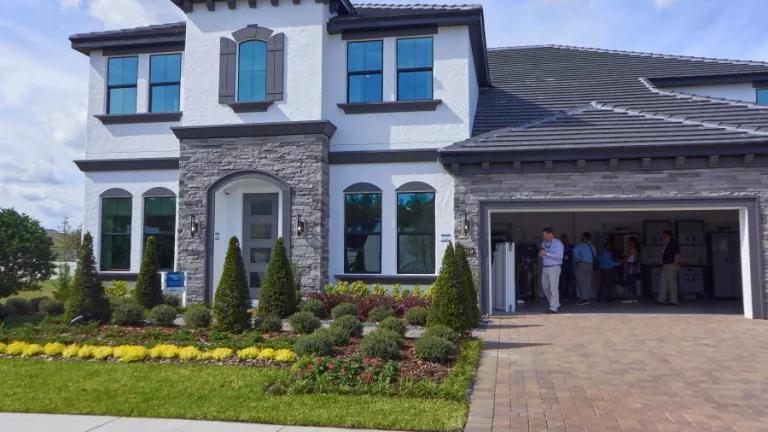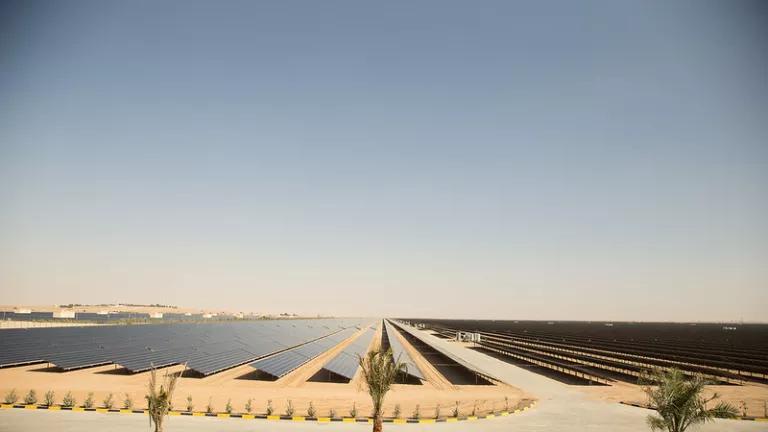Setting the Standard for Climate-Protective Homes

Suppose your city recognizes the challenge of limiting climate change and wants to do something serious about it. There is now a new tool in the toolkit of climate solutions: an ambitious building energy standard for new homes that is even more efficient than the accepted U.S. model energy code. The standard is called ASHRAE 90.2-2018 and it was published by ASHRAE late last year. It sets a new level of ambition for how much energy (and thus climate pollution) we can expect to save in new homes.
ASHRAE is a professional society of engineers that Congress has delegated to establish model new construction efficiency standards that by law states must adopt for commercial buildings. The new ASHRAE 90.2-2018 standard, for homes and apartments of three stories and fewer, is not required by federal law but is available for jurisdictions that want to demonstrate their willingness to comply with the Paris Agreement on climate change, or for companies that want to set a high specification for what they will build, finance, or rent.
The new building efficiency standard offers a fundamentally different approach than previous standards by ASHRAE and by other national and global organizations: it does not specify prescribed energy-saving features that must be installed but rather establishes a performance target and gives builders and designers the flexibility to meet the standard in ways of their own choosing.
Virtually all other codes or standards set prescribed levels of insulation and equipment efficiency as a base case, even if they allow tradeoffs. These simple-sounding prescriptive packages are often more expensive to build and don’t spur as much innovation in the building supply industries because they are competing on the same product specification year after year after year.
The approach of setting a building standard based on energy performance, rather than prescriptive requirements, was pioneered by California in the 1980s but has not been used much elsewhere in North America.
A New Home that Complies with ASHRAE 90.2
What is special in this picture is…NOTHING. The efficiency features are invisible
The performance approach specified in the new ASHRAE 90.2 standard is exciting for two reasons: first, by establishing a numerical target for energy efficiency, it offers a criterion by which homes can compete based on not just meeting the mandated energy-saving standard, but by doing even better. The efficiency criterion in the standard is the “Energy Rating Index” (“ERI”), which is essentially the same as the consumer-facing HERS Index, and is also the criterion used in the model International Energy Conservation Code (IECC). Builders can compete on efficiency using this index: showing that they not only comply but that they do even better at reducing their carbon footprint and energy bills.
Second, experience suggests that meeting a performance target results in a house costing less to build. Builders have claimed savings of over a thousand dollars per house from using the performance method because they can avoid efficiency measures that are more expensive in a particular model house and substitute ones that work just as well but are cheaper. The performance approach also creates competition among suppliers of efficient devices to improve efficiency and cut costs even further. This competition also leads to continual improvement over the years.
While the efficiency criterion in the standard is the “Energy Rating Index” (“ERI”), the level of index required in 90.2 is some 20 percent lower than in the IECC, so energy consumption is about 20 percent lower with this new standard. (The IECC is established under U.S. law as the presumptive model energy code for states to adopt, and states are required to consider adoption of the IECC or something at least equally energy efficient.) ASHRAE 90.2-2018 also requires some energy efficiency features as mandatory measures that cannot be traded off, for example when there are health or comfort issues in addition to just energy consumption issues.
The ERI levels required in the standard are in the mid-40s (they vary slightly with climate zone), compared to a 2006 code-compliant home that gets a 100 rating and a Zero Net Energy home whose score is (naturally) 0. Homes with a mid-40s rating save more than 50 percent in typical utility bills and climate emissions, and are also more comfortable and healthy to live in. The savings in energy bills alone pay for any additional cost to construct them—something the ASHRAE committee analyzed and demonstrated during the process of approving the standard.
Typical methods used to comply are likely to be:
- More insulation in the floors, walls, and ceilings
- Tested, leak-free ducts (or better yet, ductless heating and cooling systems)
- Draft-free construction with mechanical ventilation and energy recovery to assure 24/7 provision of adequate fresh air that isn’t too cold or dry or humid
- Solar panels on the roof
- Cool roofs
- LED lighting with automatic controls
- triple-pane windows
This standard could be used by a city or county, or by a state or province, or a nation, that wanted to adopt a more advanced code for new housing construction. It could be used by utilities that want to incentivize more efficient housing. Indeed, a new specification by the Consortium for Energy Efficiency recommends the levels in this standard as an option for its efficiency program administrator members to use for incentives. And it could be used by a home builder as a specification that all its houses will meet, to demonstrate the company’s commitment to greener business practices. It also could be used by individuals desiring a custom-designed home as a specification for the design team.
In response to growing concern about the consequences of climate change, many jurisdictions and businesses have set ambitious goals for reducing climate pollution. But many don’t know the specifics of what they can do that would make the greatest difference but still be feasible and economical. ASHRAE 90.2 can be a new way to meet their targets.



